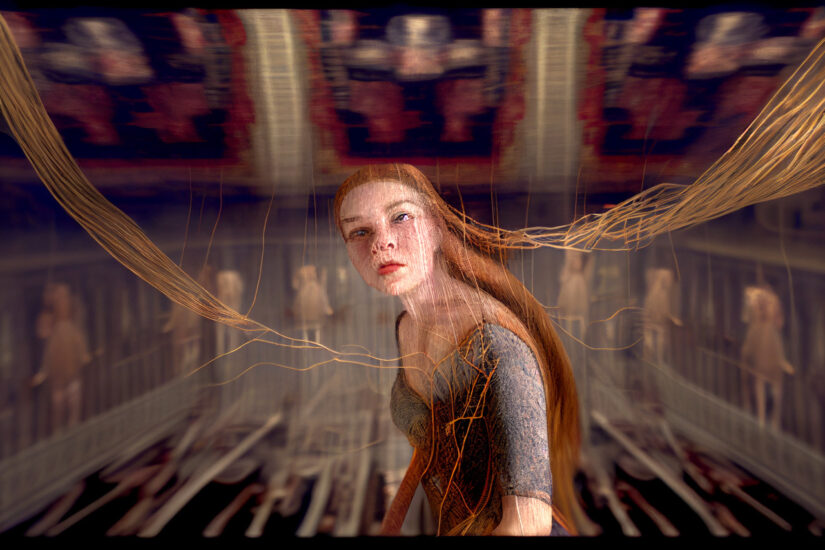Moira is the ancient Greek goddess of fate, who disposes of life and death of both humans and gods. She appeared in three forms. Klotho, the spinster, develops the thread of life with her spinning wheel. Lachesis coils or holds the spun thread – it is the goddess who allocates and determines fate. Atropos inevitably cuts the thread of life. The three Moires symbolise a musical and visual triptych for which the basic ideas were provoked by an essay by Peter Sloterdijk on the anthropocene, which in Sloterdijk’s interpretation refers to an apocalyptic logic: a proof of the end.
MOIRA by HERMESensemble, Catalina Vicens and Kurt D’Haeseleer takes images of the illustrious fourteenth-century Tapestry of the Apocalypse from the castle of Angers as its basic element. The tapestry depicts the ravages caused by war, plague and famine. Fragments of the tapestry are digitally manipulated and animated and the viewer is drawn into the texture and visual power of the ‘Tapestry of the Apocalypse’.
The material is presented through three chapters, evolving chronologically back in time. The first part – Atropos – offers a dialogue between organetto and AI-generated video. Lachesis, the second part, reflects on the Industrial Revolution in a rhythmic duet for bass clarinet and organetto, carried by electronics. Klotho is the name of the third movement, in which Daan Janssens’ [incipits] accompany the apocalyptic images of the tapestry of Angers.
The visual design for the triptych is inspired by the history of tapestry art and the evolution of technology and craftsmanship. Through an audiovisual fresco, the viewer travels from a post-industrial virtual landscape to the pre-industrial era.
